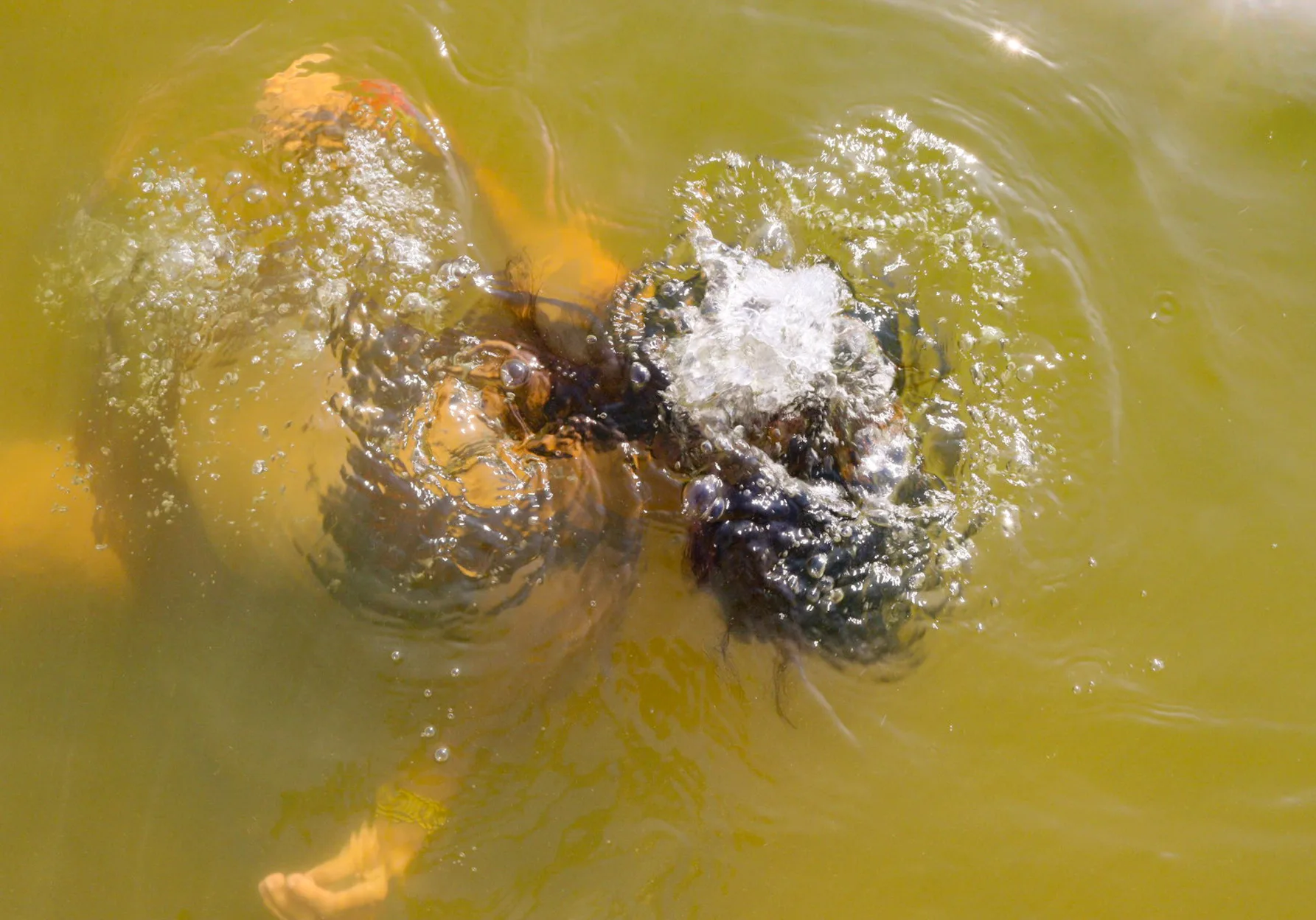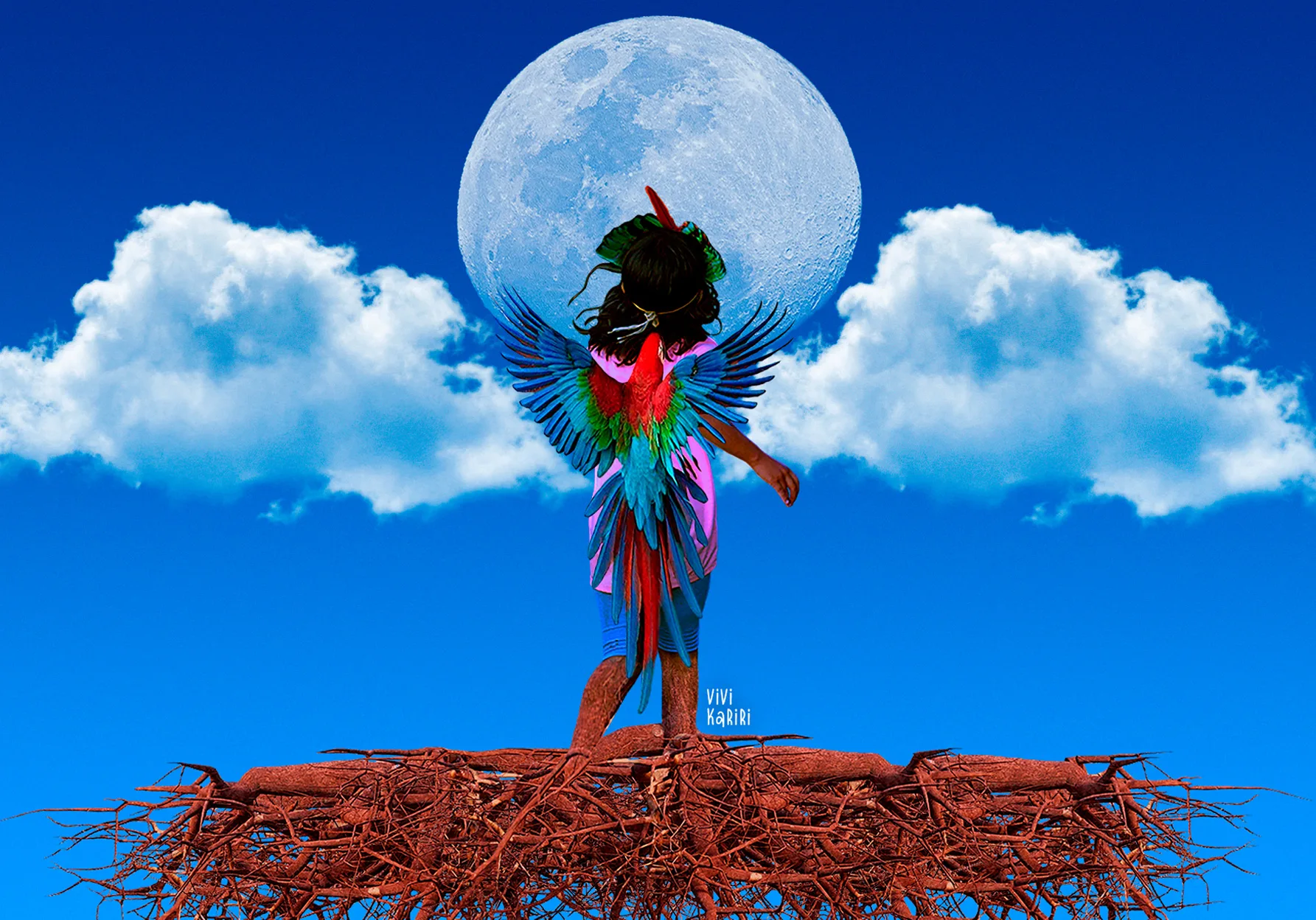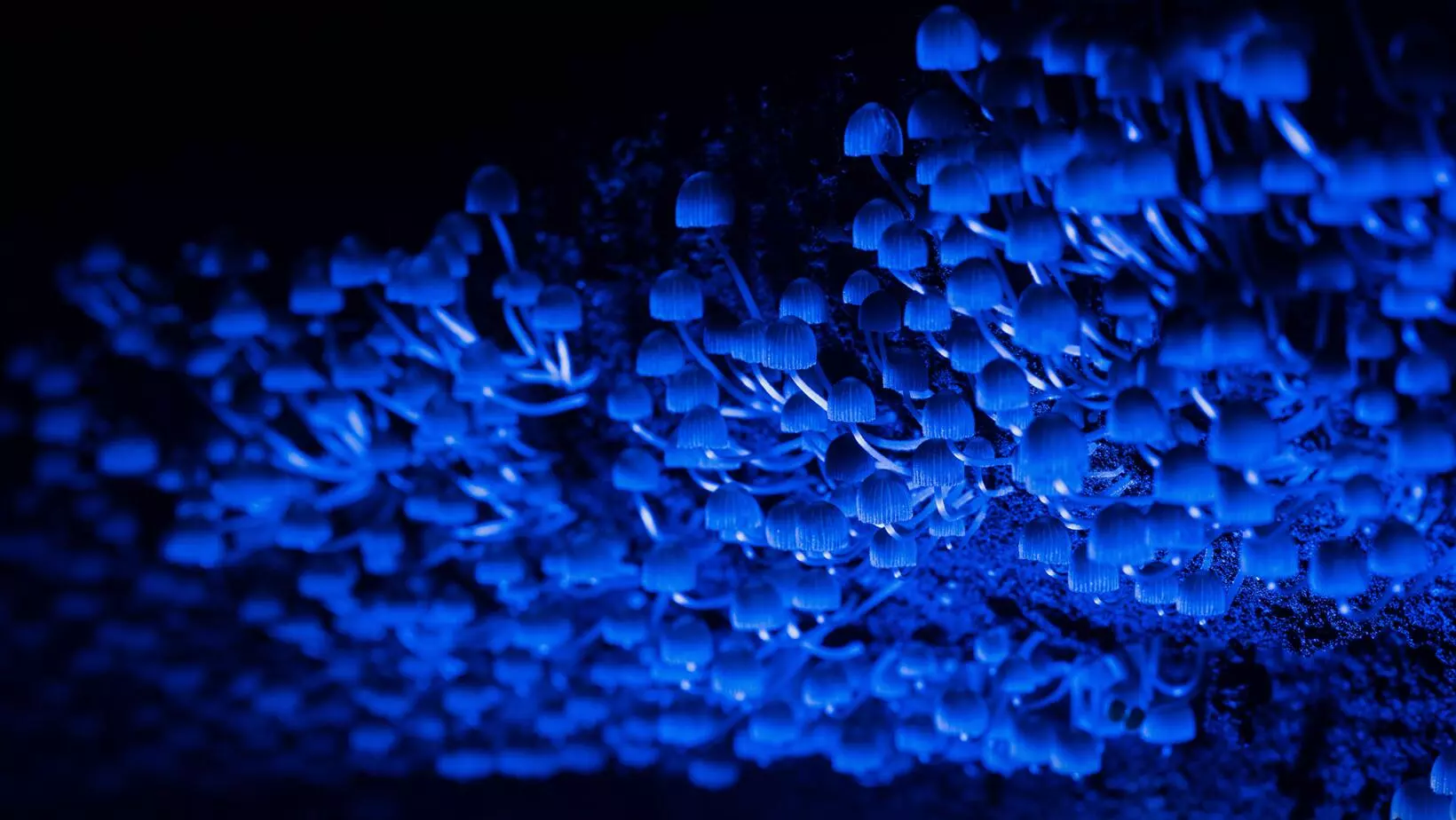September 3. I left Manaus at 3:30 PM heading toward the municipality of Humaitá, in southern Amazonas. The goal was to look for, and document, the fire that destroyed this part of the Amazon, which is known as Amacro, on the border with Acre and Rondônia. The state of Amazonas is one of the areas with the highest concentration of fires in the country, with 17,191 fires on record so far. There are dead trees, burned and fallen, from beginning to end. A devastating scenario.
I wanted to take the first ferry, at 4:30 AM, leaving Careiro da Várzea, a municipality that is still within the Manaus metro region. The journey takes one hour. I then followed the BR-319 [highway] to the city of Humaitá, 730 kilometers down the road. There were not yet any fires along this stretch, but the smoke already portended what I would find in the coming days. It was impossible to make out anything on either side of the road until I came to the city, which wasn’t blanketed in smoke. In some places the air was unbreathable. Seeing more than a few meters from the car was impossible. Dust mixed with the smoke and greatly hindered visibility.
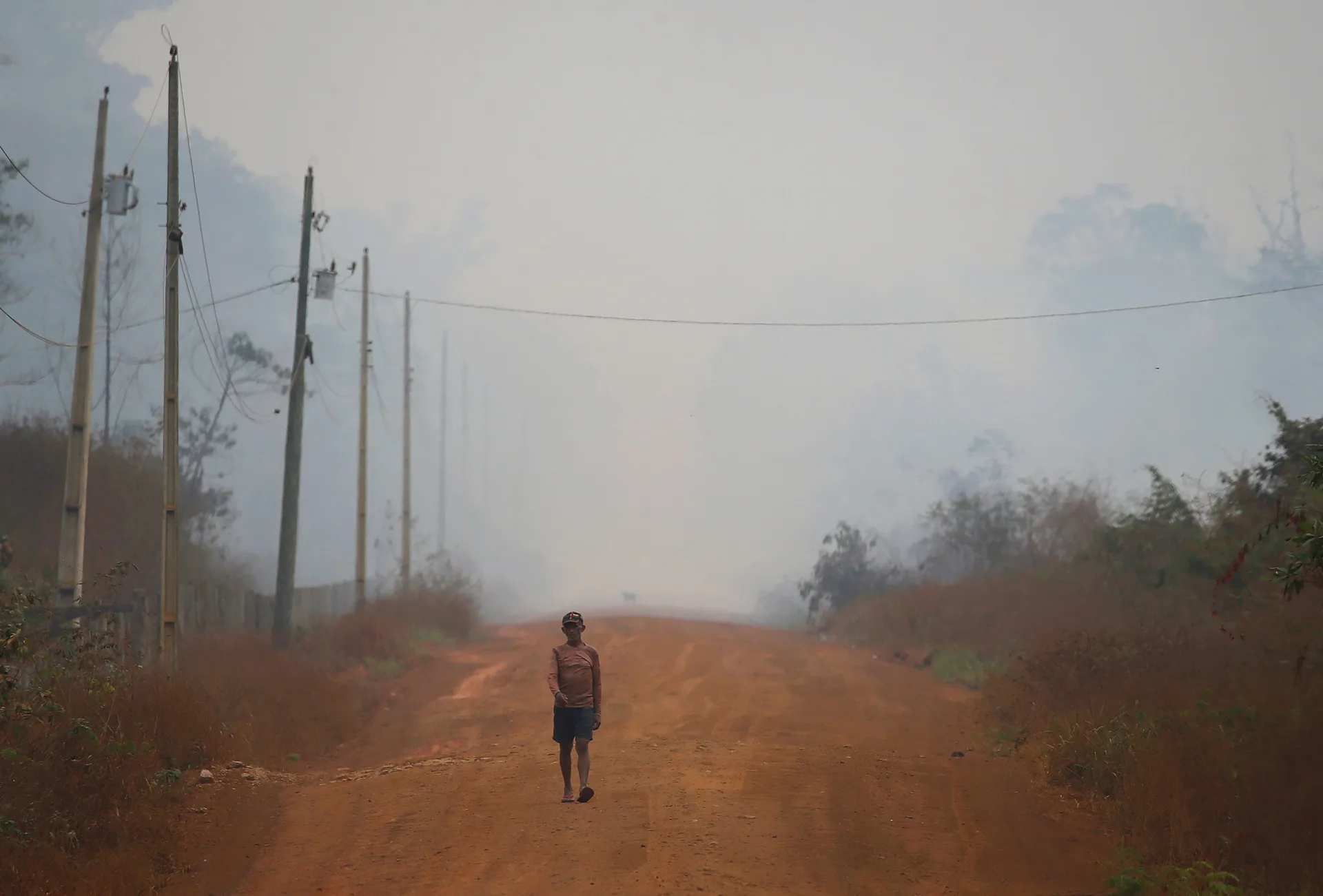
There are fires along both sides of the Trans-Amazonian Highway, a symbolic project of the model proposed since the business-military dictatorship to destroy the forest
I spent the night in Humaitá. My monitoring showed fires moving toward the city of Lábrea. So my plan for the next day would be to take the BR-230, the Trans-Amazonian Highway, to Lábrea. There, it would indeed be a scenario of destruction – a place where your throat starts to hurt, your eyes burn, your mouth feels dry.
September 4 to 7, 2024
I left Humaitá and headed to Lábrea. I ran into several areas of fire in the forest, but almost no operations to extinguish the flames. As a region, southern Amazonas is practically invisible to the state. What we see on TV, firefighters putting out fires in other regions of the country, we don’t find that there. Every once in a while you can find firefighters trying to put out big fires. The firefighters try to do their best, but sometimes they don’t have the support, car, gasoline. The State is nearly non-existent in these regions.
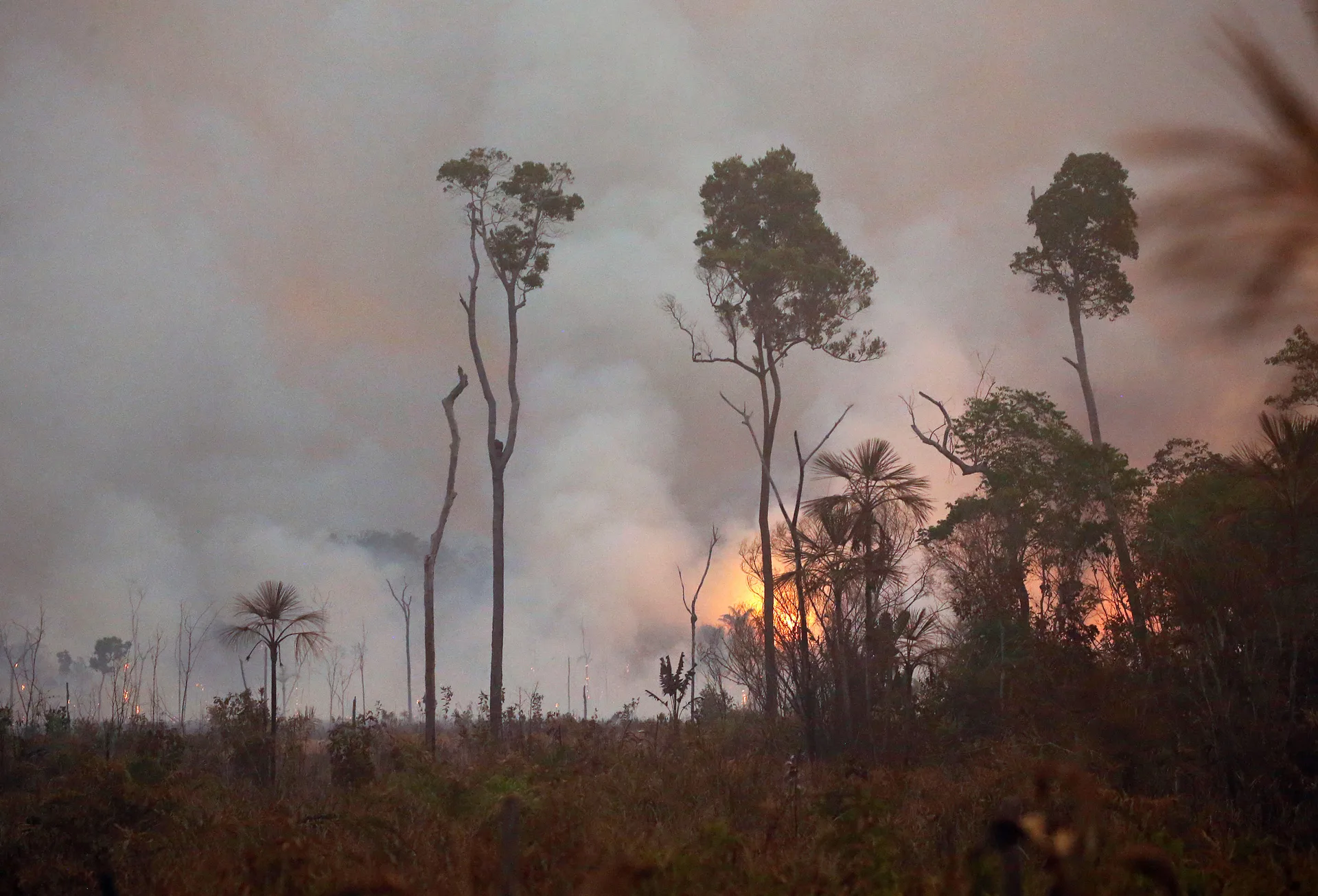
Criminal fires destroy the forest and suffocate humans and non-humans, while the Brazilian government is slow to fight them
I have a very strong connection to Lábrea, because it’s where I was born. I always put a lot of emotion into my work. And I cry a great deal while covering the news. During this coverage on the fires in the Amazon, I cried several times. There are times when we fall apart.
During interviews, people talked a lot about the large amounts of smoke and the Purus River drought. The smoke was so thick that it was hard to even see the sunlight. It mostly affects children and old people. And many people in Lábrea are still suffering from Covid-19 side-effects. One person I interviewed said their lungs and speech had been affected. People have a hard time walking outside, sleeping at night, and even seeking medical care.
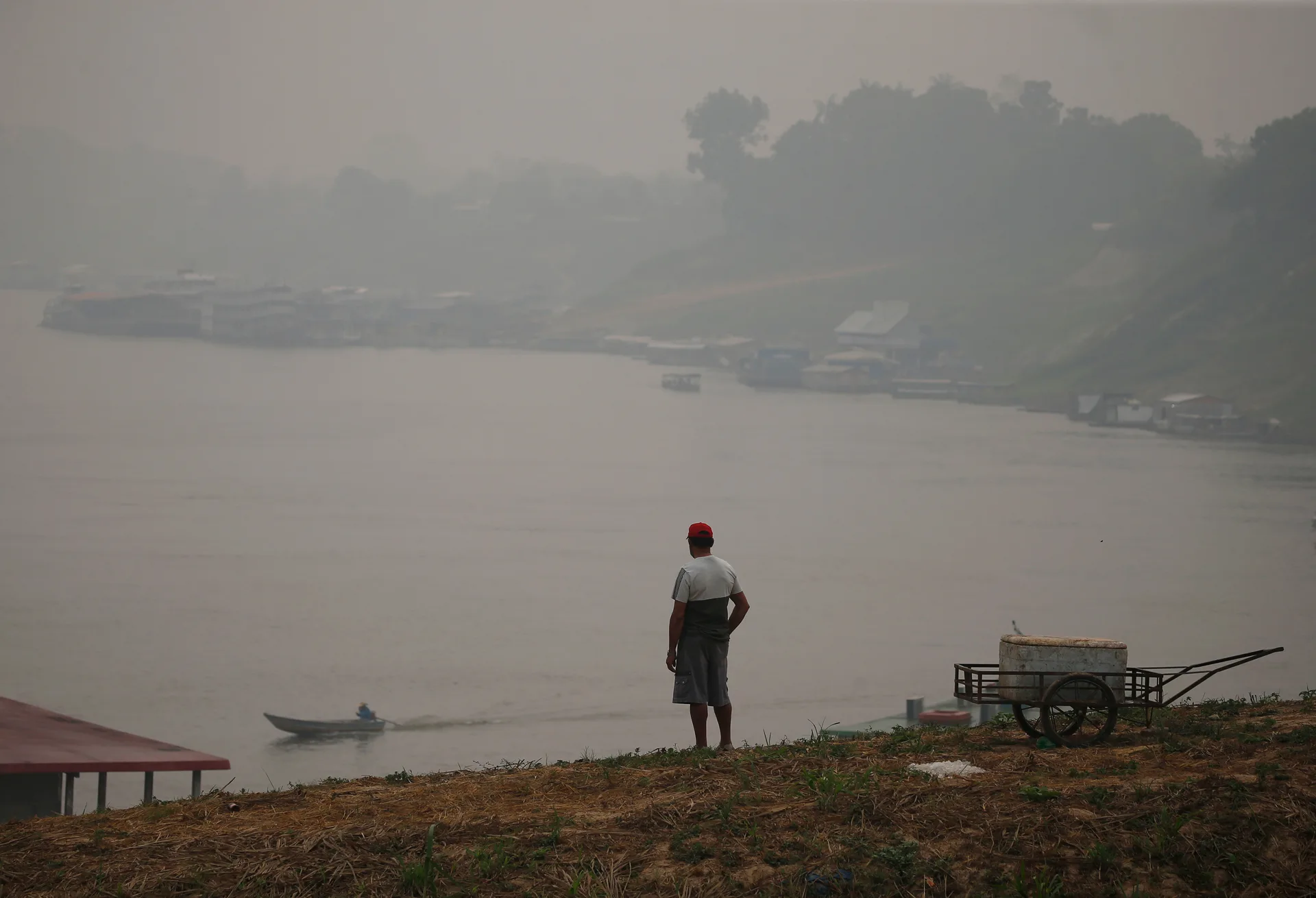
Navigating the river in search of food has become a challenge: the same drought that helps to spread the fire also causes the fish to disappear
Each time I return to the city, there are more fires and more poverty. I met an Indigenous woman who was using a nebulizer treatment for relief from the impacts on the city. But she didn’t have any more aerosolizing medication. The drug cost around R$ 15, but she didn’t have the money. For a population that practically lives in extreme poverty, sometimes R$ 5 is the difference between buying one kilo of fish for lunch or bread for their child. Nobody is going to buy medicine when they are this in need, only if they are dying and have money.
And not even Nature, ever the source of Ribeirinho existence, has been able to help. Lair, a 22-year-old fisher I met, had just come back from fishing. He spent two days on the river, yet returned with nothing. He said he found the river had dried and many fish were dead
Seeing the city in these conditions is painful.
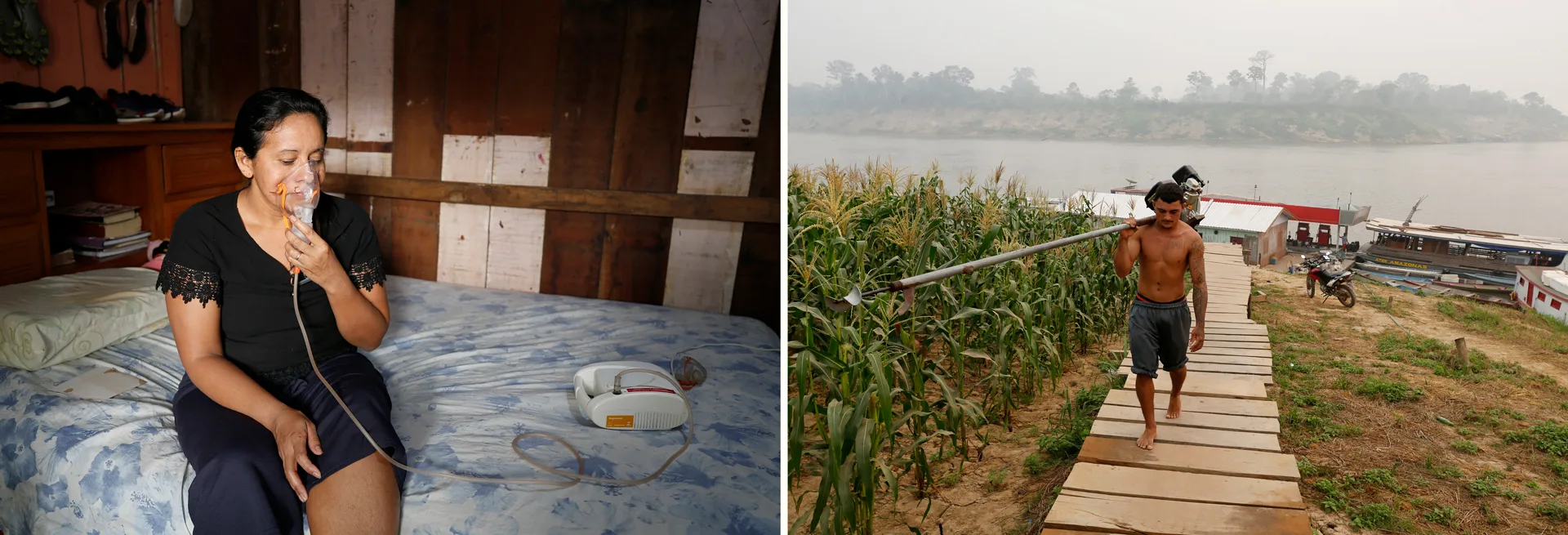
Without money for aerolizing medication, Antônia Campos seeks relief from the effects of the fires using just water in her nebulizer; Lairton da Silva saw a nearly dry Purus River
September 6, 2024
After two days in Lábrea, I went to Humaitá. Normally, the trip would last an average of three to four hours, but the journey had to be stopped because of the fires I ran into along the road. And I had to photograph them.
I reached the city at 9:00 PM on September 6. One of the things I noticed in Humaitá is that in general, people support illegal mining. Despite the Federal Police destroying 420 barges two weeks earlier, lots of illegal mine barges can still be found at the ports. It’s all out in the broad daylight.
In talking to fishers, I learned about a community that was heavily impacted by the Madeira River drought. The same drought that helped to quickly spread the fire. I decided to take a boat and go see them. Right upon arriving, it was a shocking scene. What used to be the middle of the river was now walkable.
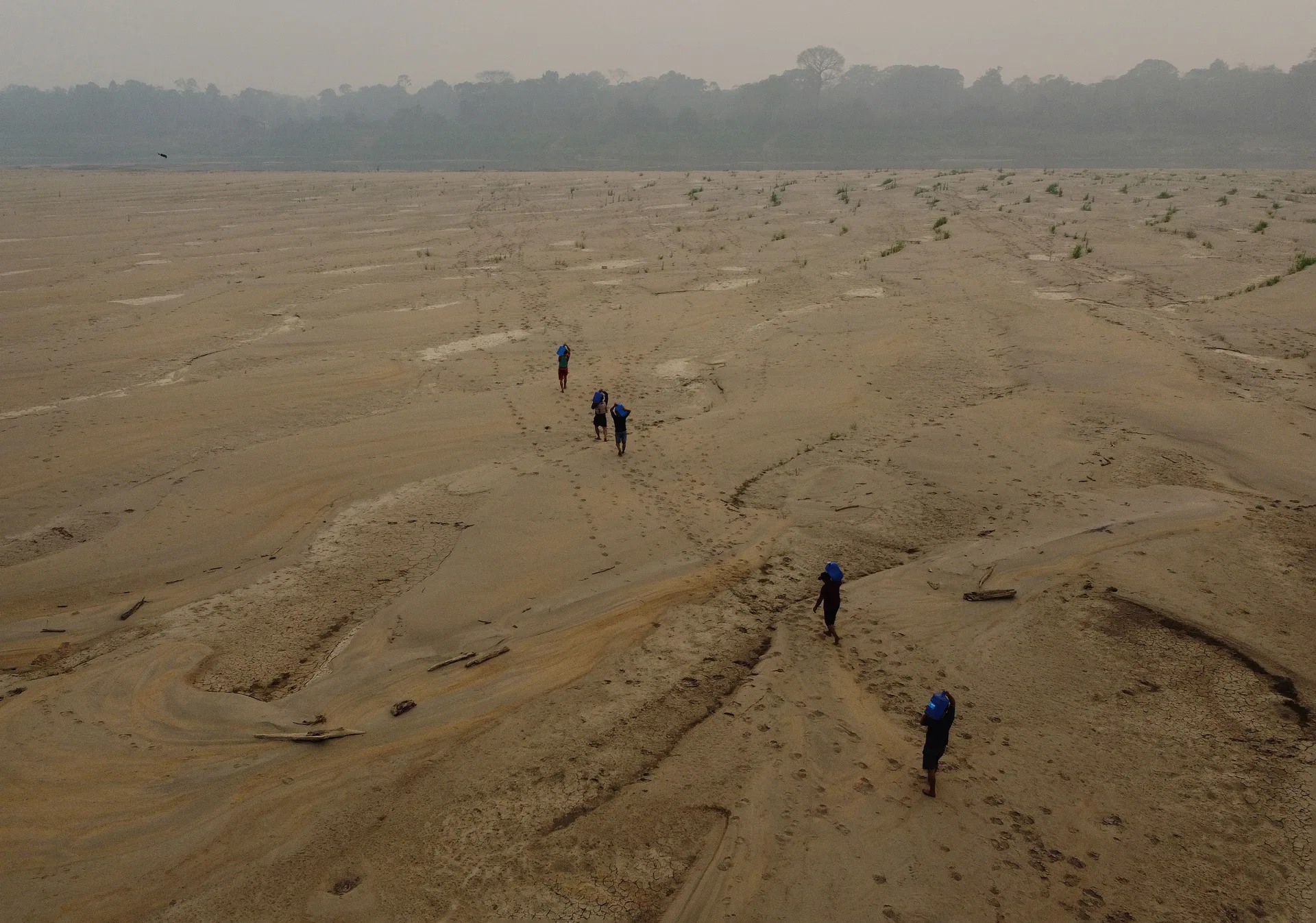
Faced with dry rivers, slaking thirst has become a marathon: people have to walk for kilometers over waterless riverbeds
I had to hike around one kilometer to reach the community. During floods, the boats can anchor almost at the doors to the houses. But that isn’t possible now. Many older people live in the community. They are in no condition to cross various kilometers on foot. With the drought, they’re practically isolated, with no access to potable water.
September 8, 2024
On the 8th, my last day in Humaitá, I went with a group of residents who had organized an operation to bring water to the communities. They went in motorboats as far as the drought allowed. Then they walked for kilometers, with empty buckets, to the city’s port, where at a floating fueling station they filled their containers with drinking water the owner lets them take. Then they went back. Along the way, they were forced to cope with scorching sand. The Ribeirinhos have to repeat this process every two days, or until their water runs out. It’s an insane amount of suffering to get some water, a basic item for survival.
‘The authorities, generally speaking, haven’t the slightest idea what the Amazon is and the actual hardship of its people’
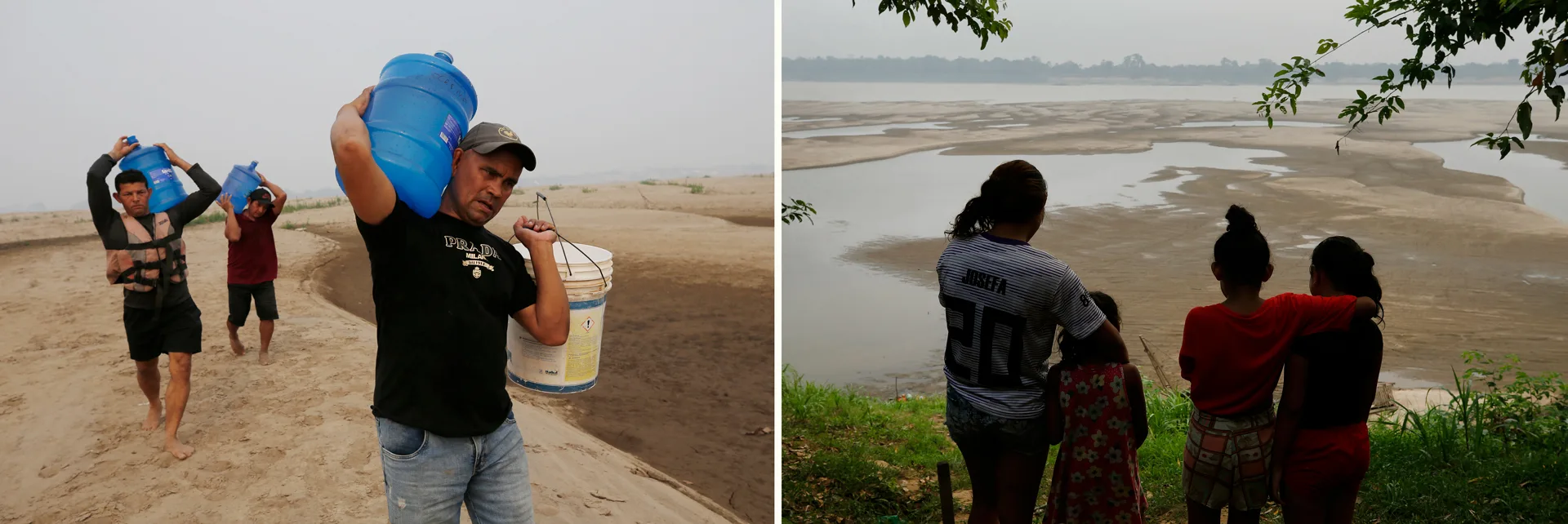
João Mendonça and other Ribeirinhos carry bottles of drinking water to distribute to those affected by the biggest drought ever on the Madeira River
After seven days of reporting on the fires in southern Amazonas, I returned to Manaus on September 8. It was time to go home. But first I had to overcome the continental distances of the Amazon.
The trip from Humaitá to the state capital takes around 24 hours, provided nothing goes wrong. I had planned to continue on to the Igapó-Açu Sustainable Development Reserve, where I would spend the night. When I got there, I saw the car had a flat tire. This problem would only be resolved the next day, adding a few more hours to the trip. I traveled another 240 kilometers until reaching Manaus.
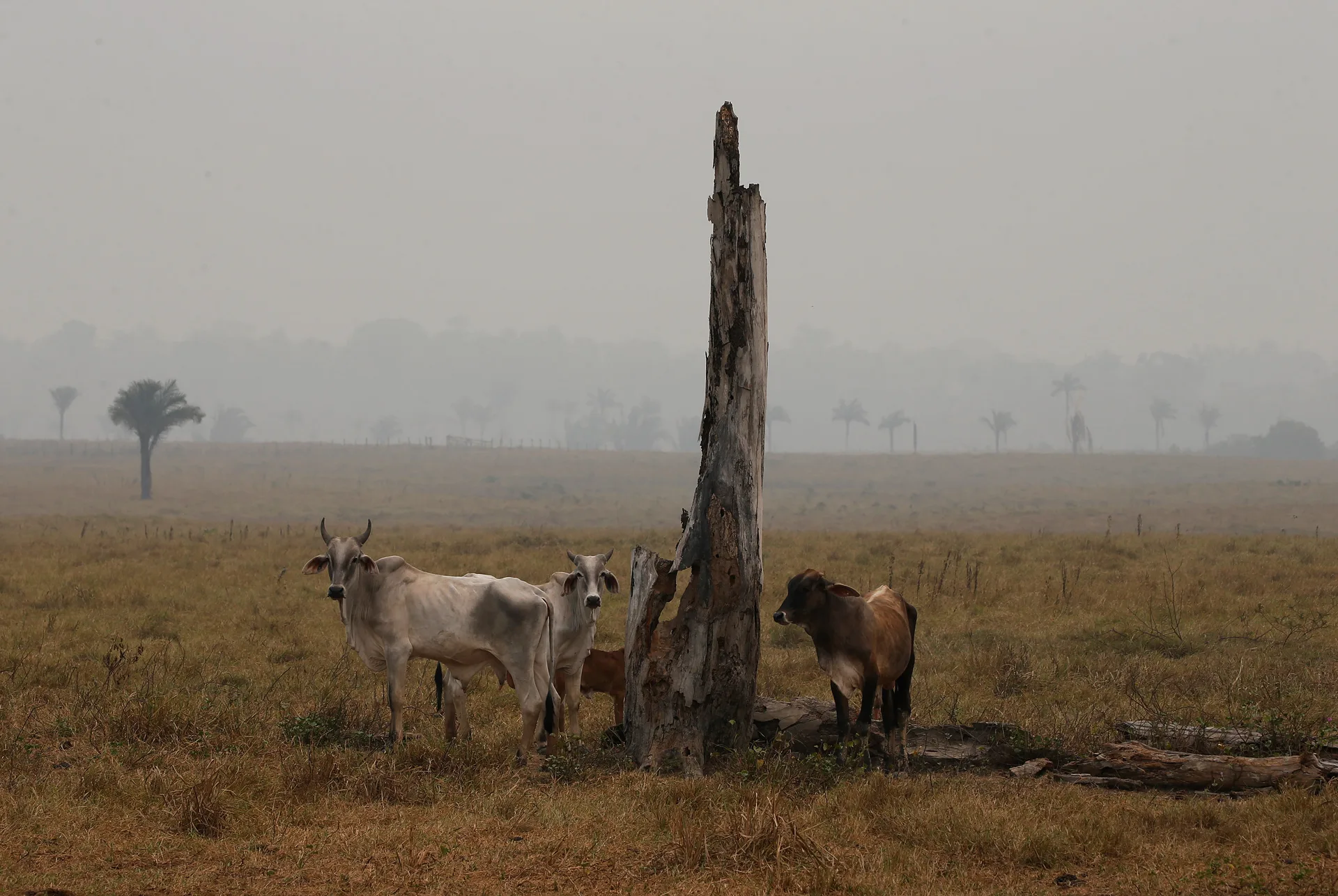
Animals are suffocated by the unbreathable air or they die from the fire caused by humans
Reflecting on the last week, I couldn’t help but think about how I’m a different person after this report. I learned from a great teacher – the dearly missed Sérgio Amaral – that nobody does photojournalism with impunity. The emotional weight is so great, even greater than the physical fatigue.
At the end of my reporting, my eyes and my heart are tired. I traveled around 2,400 kilometers on this trip. I photographed many fires, but I saw no government action. I’ve been covering fires for ten years. Very few times have I found a government presence where I went.
The authorities, generally speaking, haven’t the slightest idea what the Amazon is and the actual hardship of its people. Based on my experience, it hurts knowing that nothing will change, it will only get worse.
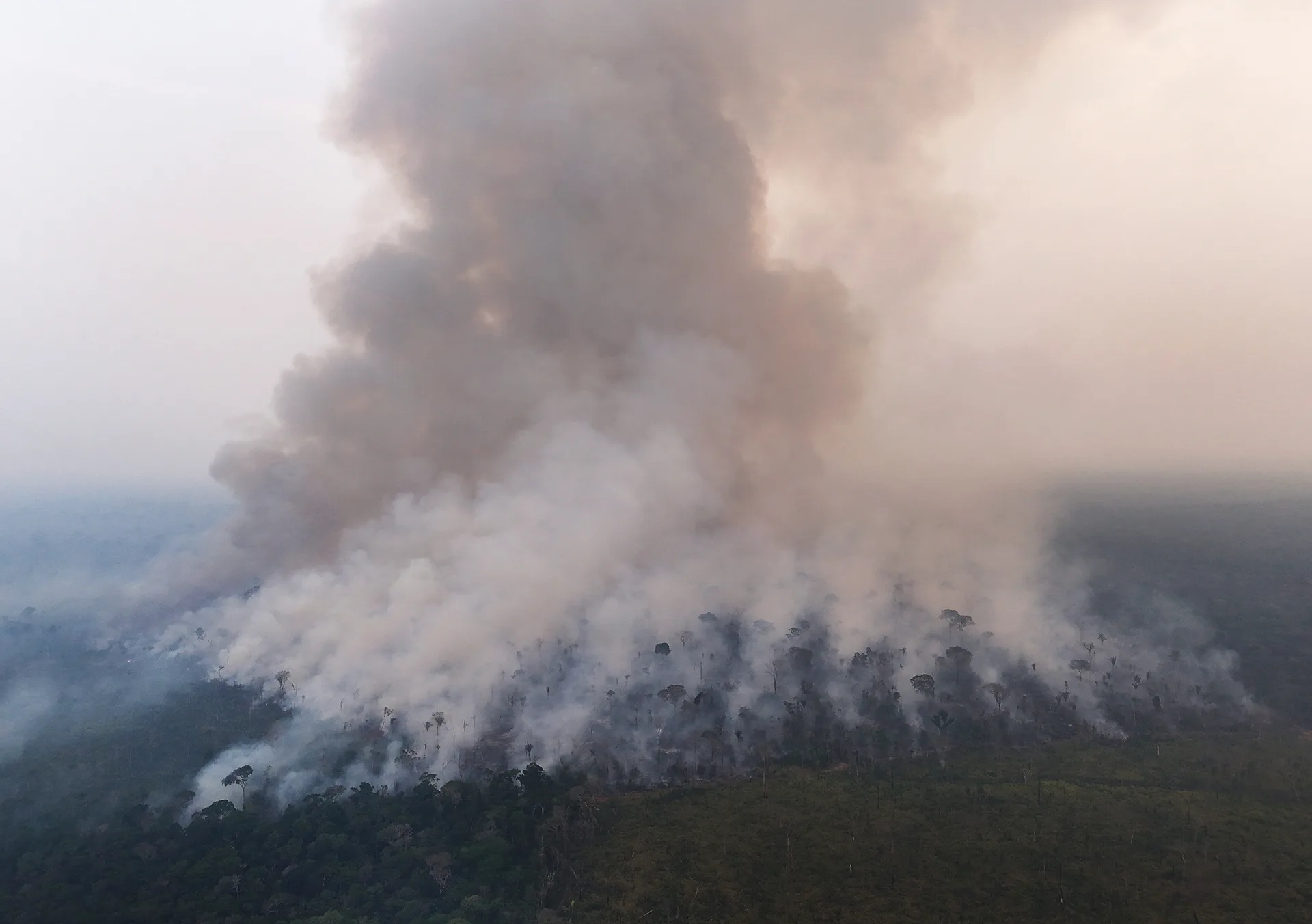
According to Mapbiomas, which monitors fire alerts in Brazil, August accounted for nearly half of all the country’s burned area this year
Text and photos: Edmar Barros
Editing: Elielson Almeida and Glauce Monteiro (Amazônia Latitude) and Malu Delgado and Talita Bedinelli (SUMAÚMA)
Photo Editor: Alice Palmeira (Amazônia Latitude) and Lela Beltrão (SUMAÚMA)
Fact-checker: Plínio Lopes
Proofreader (Portuguese): Valquíria Della Pozza
English translation: Sarah J. Johnson
Spanish translation: Julieta Sueldo Boedo
Editorial workflow coordination: Natália Chagas
Editor-in-chief: Talita Bedinelli
Editorial director: Marcos Colón ( Amazônia Latitude) e Eliane Brum

